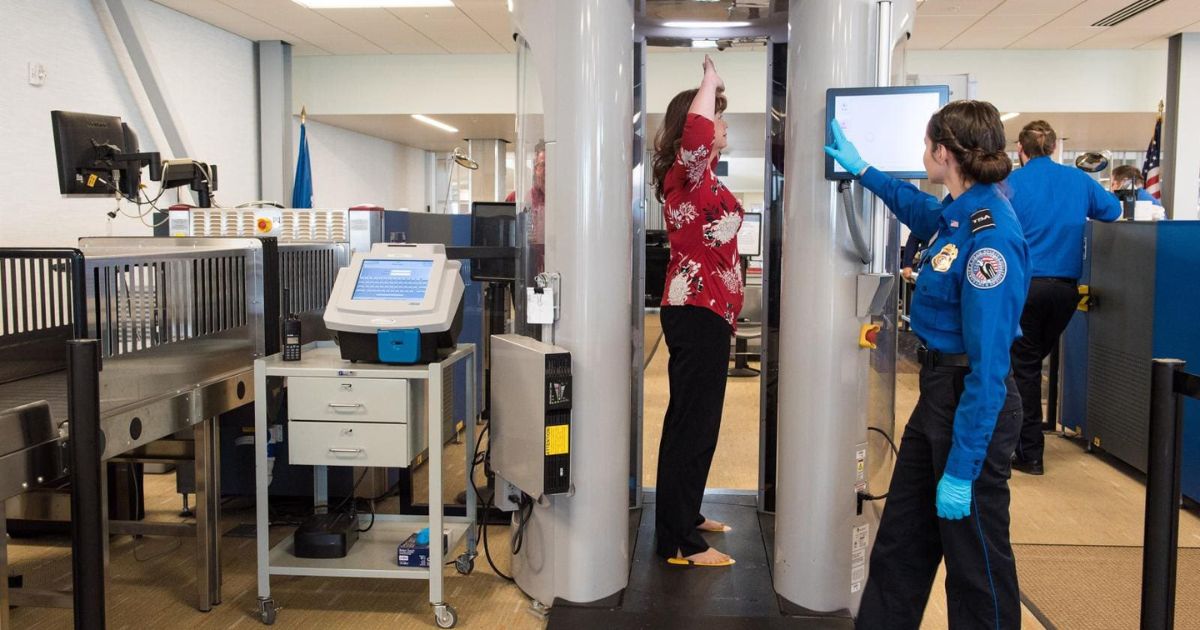Anyone who has done a little traveling knows how infuriating it can be when you are in a hurry to catch your flight, but have to go through many layers of TSA security before you can even arrive at your gate. From shedding clothing to unpacking your carry-on for laptops and other electronics, it could be a bit frustrating at times. But nothing tops the full-body scanners.
While it could be troublesome, especially if you arrive late at the airport, you must agree that all of us would feel way unsettled if the TSA security checkpoints were less strict. There was a time when airport checking was quite breezy.
While scanning the cabin, baggage still existed, and no one needed to unpack it or remove their shoes and belts. But then 9/11 happened, and the Transportation Security Administration came under real pressure to re-evaluate its security measures.
In 2009, when a passenger tried smuggling plastic explosives in his underwear, the agency realized that scanning carry-ons and metal detectors were not enough. By 2010, most major airports across America were getting advanced fully body scanners. According to some reports, at least 500 of this new technology were installed.
However, it soon became controversial as many passengers felt the procedure was too invasive. According to a 2011 study published in the Archives of Internal Medicine, there were two types of body scanners at that time. Millimetre wave scanners were designed to detect prohibited metallic and non-metallic items concealed inside clothing by sending out low-energy waves and then capturing the energy reflected back.
What does the TSA do when you don’t have Real ID? You get a red paper of shame and a stern word or two. That’s it.
(photos from my brother) pic.twitter.com/YXDHP0Oyhl
— Michael J. Miraflor (@michaelmiraflor) May 15, 2025
The other type, backscatter X-ray scanners were also designed to detect the same things without the need for a pat down. These scanners created detailed images of travelers’ bodies by using radiation to penetrate soft tissue and then detecting the radiation reflected off the person.
In layman’s terms, backscatter scanners resulted in TSA staff getting to have a look at very explicit images of a passenger’s body, including their intimate parts. Naturally, it led to a massive backlash despite the agency putting some measures in place to protect privacy. According to CBS, in 2010, many passengers and even pilots claimed that TSA was violating their rights, calling it a “virtual strip search.”
FYI, TSA removed the backscatter body scanners in 2013. Millimeter wave is now used which doesn’t penetrate the skin and only detects anomalies on the body. The image created is a generic genderless cartoonish outline. Nobody’s body is being viewed. pic.twitter.com/VlDZgEYTSN
— MrMark (@MarkSpriggel) November 13, 2024
CBS reported that at least 15% of Americans were against using the machine at that time. The Electronic Privacy Invasion Center even filed a lawsuit against the Department of Homeland Security for these “unlawful and needlessly invasive” TSA body scanners. Then, there were also concerns over health issues from radiation and X-ray elements.
Amid the debate, TSA began removing the backscatter scanners within two years of initial installations. At that time, the official reason provided was different. “It’s being done strategically. We are replacing some of the older equipment and taking them to smaller airports,” David Castelveter, a TSA spokesperson, said at that time, according to Propublica.
Since then, the agency began pushing milileter wave scanners instead. TSA went to great lengths to prove that these were not invasive to avoid further controversies. Eri Jenkins, a TSA checkpoint staff, revealed to Reader’s Digest how these new machines work. According to the worker, the scanners provide a “nondescript avatar image of the human anatomy” to detect if there is any restricted items inside clothing or on skin.
It’s safe to say that today the machines used by TSA are much more protective. The agency made a significant progress since the initial implementation of full-body scanners in 2010.













